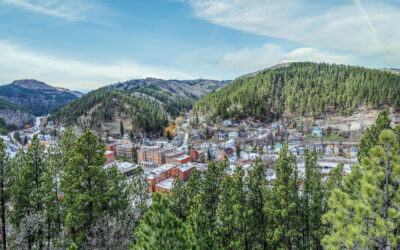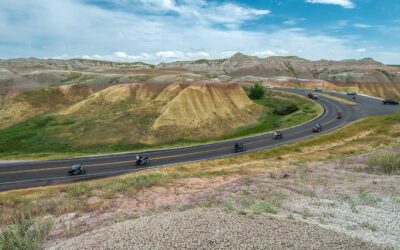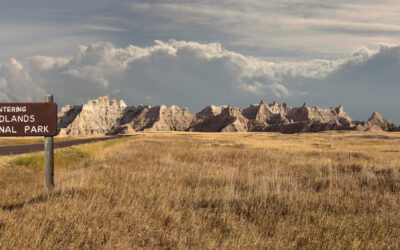Jewel Cave National Monument, a sparkling subterranean wonder nestled in the Black Hills of South Dakota, captivates visitors with its extensive network of passageways lined with dazzling calcite crystals. As the third-longest cave in the world, Jewel Cave’s intricate chambers and geological tapestry tell a story of natural artistry and human discovery. This article delves into the history of Jewel Cave, exploring its geological formation, cultural significance, and the conservation efforts that protect this underground treasure.
Key Takeaways
- Jewel Cave is the third-longest cave in the world, boasting over 200 miles of mapped passageways adorned with calcite crystals that give the cave its name.
- The cave’s discovery and exploration have contributed significantly to our understanding of subterranean geology, while ongoing conservation efforts ensure its preservation for future generations.
- Jewel Cave holds cultural importance for the Lakota people and offers a unique comparison to other caves in the Black Hills, such as Wind Cave, each with its own ecological and historical significance.
Unveiling the Sparkle: Jewel Cave’s Geological Tapestry
Beneath the rugged landscape of the Black Hills, a subterranean marvel beckons explorers and nature enthusiasts alike. Jewel Cave National Monument in South Dakota offers a stunning underground experience with 200 miles of passageways. This hidden gem, not far from the iconic Mount Rushmore, is the third-longest cave in the world, inviting visitors to traverse its sparkling aisles and marvel at the geological wonders within.
A Subterranean Symphony of Crystals
The Crystal Caverns section of Jewel Cave is a testament to nature’s artistry, showcasing an array of calcite crystals that glitter and dance in the cave’s lighting. Visitors can witness formations such as Hydrocrystals, Dogtooth Spar, and Nailhead Spar, each with its unique luster and shape. These natural wonders are not just visually stunning but also provide insight into the intricate processes that shape our planet.
The Discovery and Exploration of a Hidden World
The exploration of Jewel Cave has been a journey of discovery, revealing over 200 miles of mapped passageways and still holding secrets yet to be uncovered. Guided tours offer a glimpse into this underground labyrinth, where each twist and turn can lead to new formations and uncharted territories. The cave’s exploration history is a narrative of curiosity and the relentless pursuit of knowledge.
Conservation Efforts: Protecting the Underground Splendor
Protecting the delicate ecosystem of Jewel Cave is paramount. Conservation efforts ensure that the cave’s natural beauty and scientific significance are preserved for future generations. Visitors play a crucial role in this by adhering to guidelines that safeguard the cave’s environment, making sure that this subterranean wonder continues to sparkle for years to come.
Jewel Cave in the Broader Context: The Black Hills’ Underground Mosaic
Comparing Caverns: Jewel and Wind Cave
The Black Hills region is a subterranean wonderland, home to two of the world’s most intricate cave systems: Jewel Cave and Wind Cave. Both offer unique underground experiences, but they differ in their formations and history. Jewel Cave is renowned for its dazzling calcite crystals, which cover its walls and ceilings, while Wind Cave is famous for its rare boxwork formations. Here’s a quick comparison:
| Feature | Jewel Cave | Wind Cave |
|---|---|---|
| Known Length | Over 200 miles | Over 150 miles |
| Unique Formation | Calcite Crystals | Boxwork |
| Discovery Year | 1900 | 1881 |
Cultural Significance: The Lakota and the Land
The Black Hills hold deep cultural significance for the Lakota people, who consider this land sacred. Jewel Cave and the surrounding area are part of their ancestral homeland, and the Lakota have long revered these underground spaces as spiritual sites. The intertwining of natural beauty and cultural heritage adds a profound layer of meaning to the caves and the landscape above.
Planning Your Visit: Navigating the Cave Safely
Visiting Jewel Cave is an adventure that requires preparation. To ensure a safe and enjoyable experience, follow these steps:
- Check the National Park Service website for tour availability and safety guidelines.
- Wear appropriate clothing and sturdy footwear for the cave’s cool, damp conditions.
- Stay on designated paths and follow the guidance of park rangers.
- Be mindful of the cave’s delicate ecosystem and avoid touching formations.
When exploring the underground treasures of South Dakota, remember that these caves are not just geological marvels but also guardians of history and culture.
Frequently Asked Questions
How long is Jewel Cave and where is it located?
Jewel Cave is the third-longest known cave in the world, with over 200 miles of mapped passageways. It is located near Custer, South Dakota, within the Black Hills National Forest.
What makes Jewel Cave unique?
Jewel Cave is renowned for its intricate passages adorned with stunning calcite crystals, which resemble sparkling jewels and give the cave its name. It offers guided tours that allow visitors to marvel at its unique underground formations and learn about its geological history and delicate ecosystem.
Are there any special considerations or guidelines for visiting Jewel Cave?
Visitors to Jewel Cave should respect the cave’s natural environment and adhere to the guidelines provided by the National Park Service to ensure its preservation. It’s important to stay on designated paths, follow guide instructions, and make reservations for tours in advance, especially during the busy summer season.






